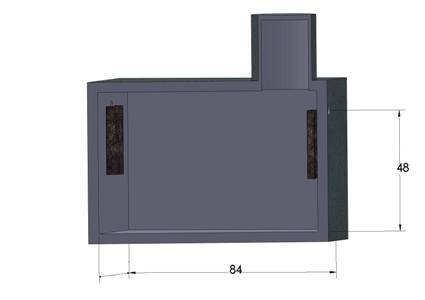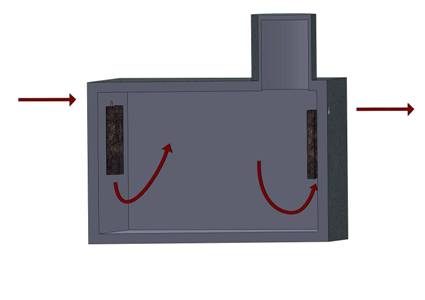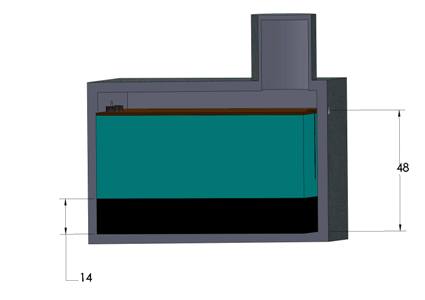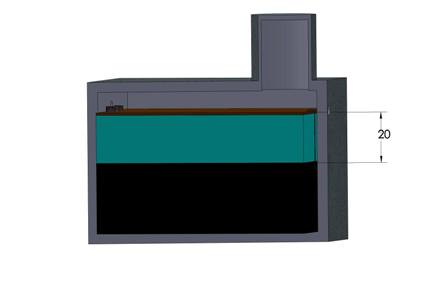An earlier blog discussed the topic of septic tank pumping and how you would know if your tank needed pumping or not. In this blog, we will look in more detail about the effects of infrequent septic tank pumping.
As stated in the earlier blog, septic tanks are sized according to the household size using standard estimated wastewater flow rates. For review, the most commonly used wastewater standard flow rate is: 75 gallons of wastewater per person and two people per bedroom.
Figure 1 illustrates a typical one thousand gallon septic tank. The wastewater capacity is calculated as follows:

Figure 1
- the length of the tank is 84 inches or 7 feet
- the maximum depth of the water is 48 inches or 4 feet, which is the height measured from the bottom of the tank to the outlet pipe.
- the width of the tank is 60 inches or 5 feet (dimension not shown).
- the capacity, in gallons, is: 7 feet x 4 feet x 5 feet x 7.5 gallons per cubic foot = 1,050 gallons.
The design of the tank allows for wastewater to enter the septic tank from the inlet pipe and through the inlet baffle. Once in the tank, the design allows the wastewater to be held for a period of time so that organic solids can settle on the bottom of the tank and bacteria can consume some of the solids.
After the hold time, new wastewater enters the tank, forcing the held wastewater out of the tank through the outlet baffle and into the drainfield. This path is illustrated in figure 2.

Figure 2
Over time, the organic solids settling on the bottom of the septic tank build up. By design, when this layer, called the sludge layer, reaches thirty percent of the maximum height of the tank’s wastewater capacity, the tank should be pumped. In the case of the septic tank in figures 1 and 2, thirty percent of 48 inches is approximately 14 inches.
Figure 3 illustrates these dimensions and also shows the clear zone directly above the sludge layer as well as the scum layer on top of the clear zone.

Figure 3
At this point, this tank should be pumped. But what happens if it is not pumped and solids continue to settle, building up the sludge layer far more than the recommended 14 inches?
In the long term, this is not a healthy situation for the septic system:
- first, as the sludge layer builds up, it reduces the capacity of the septic tank; it just won’t hold as much wastewater.
- as a result, wastewater prematurely leaves the septic tank with higher concentrations of organic solids.
- higher concentrations of organic solids leaving the septic tank means more solids in the drainfield, impairing the ability of the drainfield to pass wastewater back to the water table.
- the slow draining drainfield means the entire system flows slowly, if at all.
Figure 4 illustrates what happens to the septic tank in the figures above if the sludge layer is allowed to thicken to almost sixty percent of the septic tank’s maximum wastewater depth. At this sludge layer thickness, the tank’s usable depth is around 20 inches, reducing the wastewater capacity to around 440 gallons! There is very little hold time in a tank in this condition. So, do yourself and your septic system a favor and pump your tank before the sludge layer gets too thick and damages the rest of your system.

Figure 4











